Symbolic Configuration and Execution in Pictures
This topic explains symbolic construction and execution in pictures.
We recommend that you read the Symbolic API as another useful reference.
Compose Symbols
Symbols are a description of the computation that you want to perform. The symbolic construction API generates the computation graph that describes the computation. The following picture shows how you compose symbols to describe basic computations.
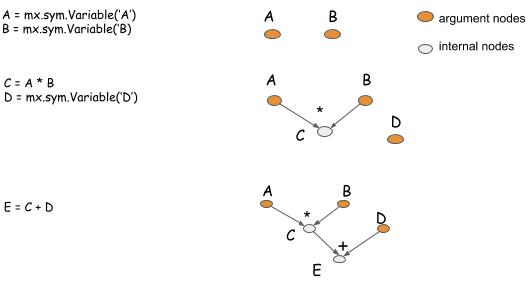
- The
mxnet.Symbol.Variablefunction creates argument nodes that represent input to the computation. - The symbol is overloaded with basic element-wise mathematical operations.
Configure Neural Networks
In addition to supporting fine-grained operations, MXNet provides a way to perform big operations that are analogous to layers in neural networks. You can use operators to describe the configuration of a neural network.
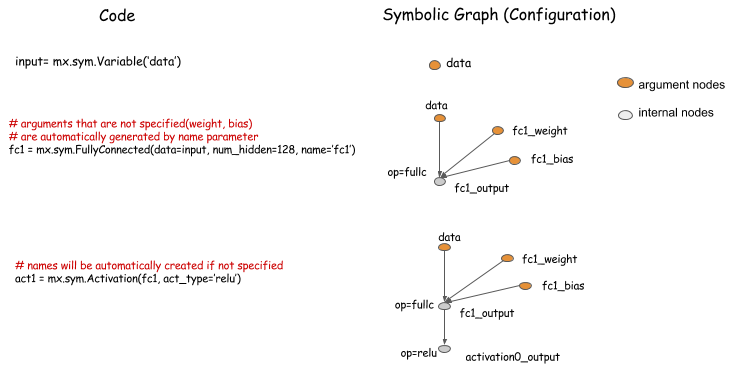
Example of a Multi-Input Network
The following example shows how to configure multiple input neural networks.
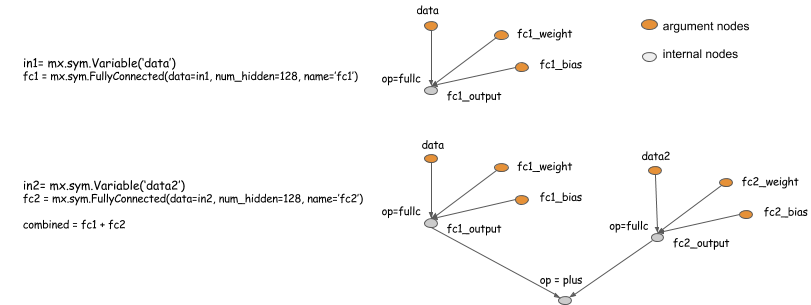
Bind and Execute Symbol
When you need to execute a symbol graph, you call the bind function to bind NDArrays to the argument nodes
in order to obtain an Executor.

To get the output results, given the bound NDArrays as input, you can call Executor.Forward.
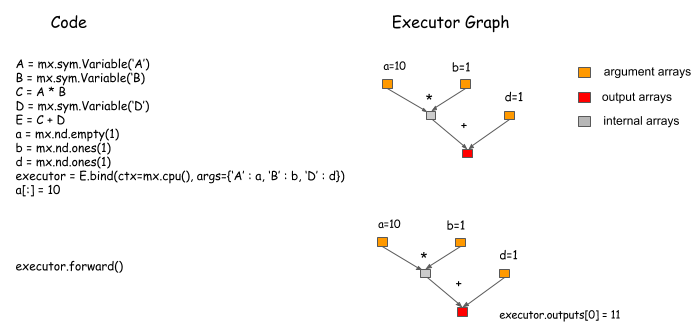
Bind Multiple Outputs
To group symbols, then bind them to get outputs of both, use mx.symbol.Group.
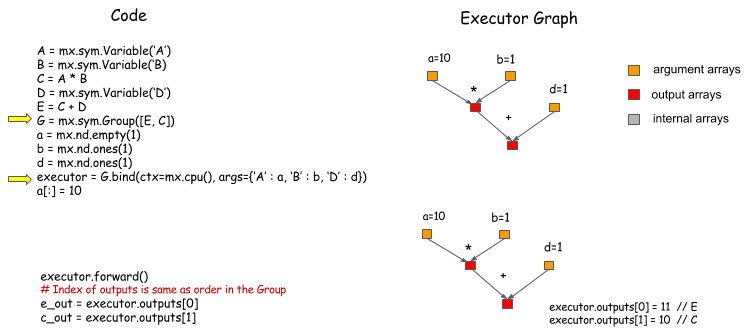
Remember: Bind only what you need, so that the system can perform more optimizations.
Calculate the Gradient
In the bind function, you can specify NDArrays that will hold gradients. Calling Executor.backward after Executor.forward gives you the corresponding gradients.
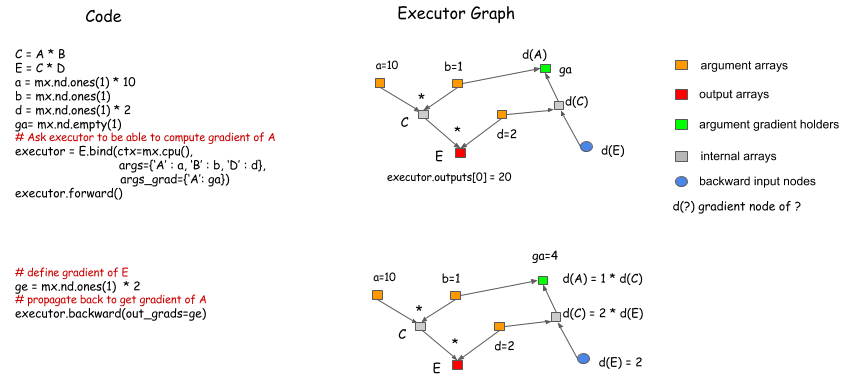
Simple Bind Interface for Neural Networks
It can be tedious to pass the argument NDArrays to the bind function, especially when you are binding a big
graph. Symbol.simple_bind provides a way to simplify
the procedure. You need to specify only input data shapes. The function allocates the arguments, and binds
the Executor for you.
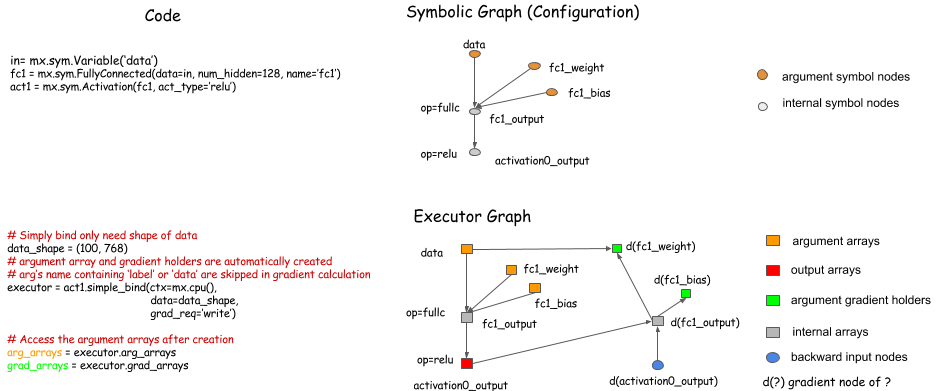
Auxiliary States
Auxiliary states are just like arguments, except that you can't take the gradient of them. Although auxiliary states might not be part of the computation, they can be helpful for tracking. You can pass auxiliary states in the same way that you pass arguments.

Next Steps
See Symbolic API and Python Documentation.
Can you improve this documentation? These fine people already did:
Sheng Zha & Carin MeierEdit on GitHub
cljdoc builds & hosts documentation for Clojure/Script libraries
| Ctrl+k | Jump to recent docs |
| ← | Move to previous article |
| → | Move to next article |
| Ctrl+/ | Jump to the search field |